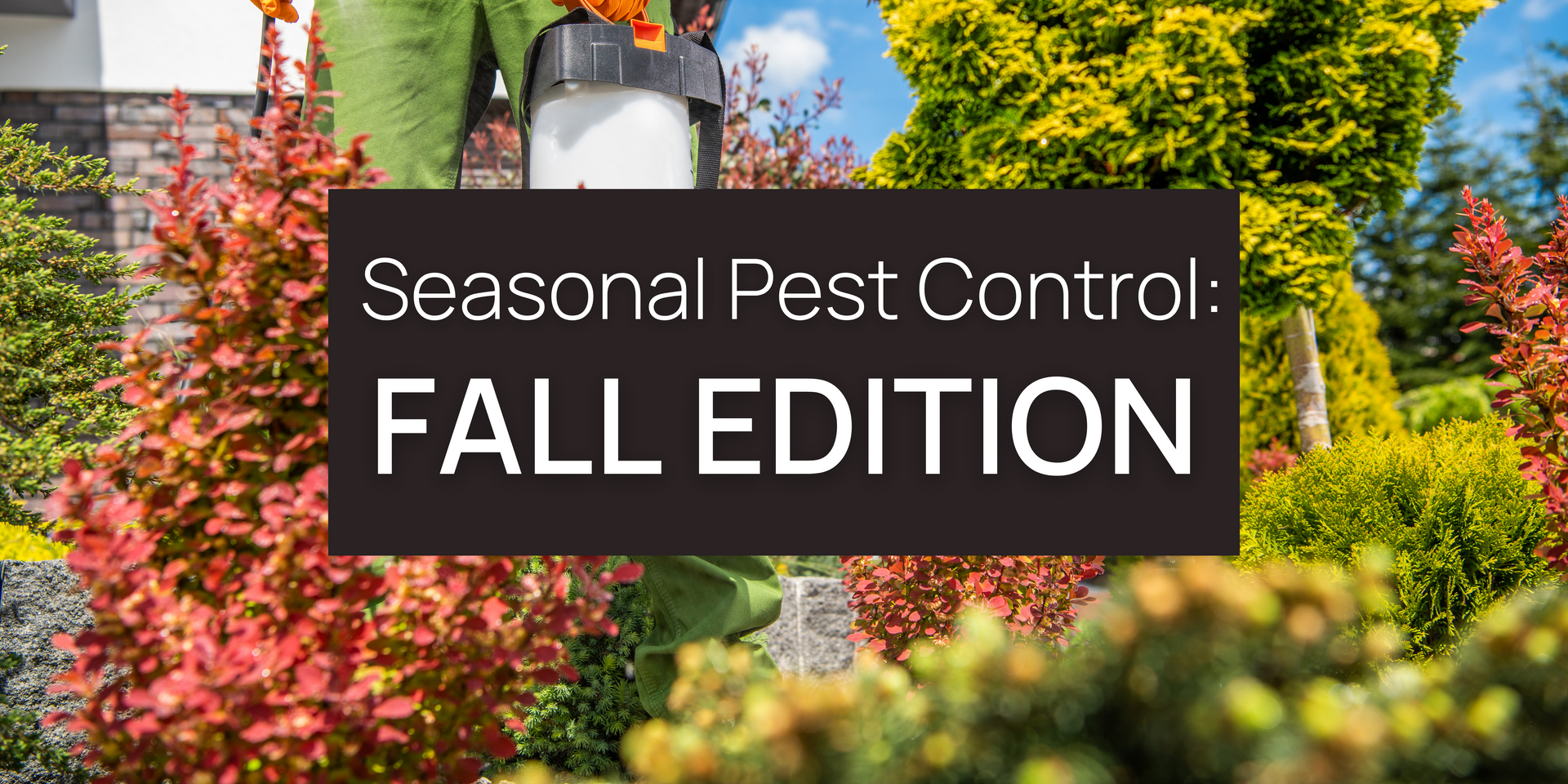The Importance of Seasonal Pest Control: Fall Edition
Shielding Your Property and Residents from Fall's Unwanted Guests

As the leaves begin to change and the temperatures start to drop, many of us welcome the cozy comforts of fall. However, property managers and homeowners alike should also be mindful of the unwelcome guests that often accompany this season – pests. Fall brings about unique challenges when it comes to pest control, and it's crucial to understand the importance of seasonal pest control during this time of year.
In this "Fall Edition" of our pest control series, we'll explore the specific pest-related concerns that arise in autumn and discuss effective strategies for keeping your property pest-free.
1. The Fall Pest Invasion:
Fall is a time of transition for many pests. As the weather cools, insects and rodents seek refuge indoors to escape the cold. Common fall invaders include:
Rodents: Mice and rats are notorious for seeking shelter indoors as temperatures drop.
Spiders: Many spider species become more active in the fall as they search for mates.
Ants: Seeking warmth and food, ants may enter buildings in larger numbers during this season.
Stink Bugs: These odorous pests congregate on the sunny sides of buildings before attempting to enter.
Cockroaches: These hardy pests are active year-round but may become more noticeable as outdoor temperatures cool.
2. Property Damage and Health Risks:
Pests not only pose a threat to the structural integrity of your property but can also endanger the health and well-being of residents. Some potential consequences of unchecked fall pests include:
Structural Damage: Rodents can gnaw on wires and insulation, causing costly repairs. Termites are also active during the fall and can damage the wood of a property.
Health Risks: Pests like rodents can carry diseases, while stinging insects can pose a threat to those with allergies.
Tenant Discomfort: An infestation can lead to tenant complaints, dissatisfaction, and even lease terminations.
3. Effective Fall Pest Control Strategies:
To mitigate the risks associated with fall pests, consider these proactive pest control strategies:
Seal Entry Points: Inspect your property for cracks, gaps, and openings that pests can use to enter. Seal these entry points with caulk or weatherstripping.
Regular Inspections: Conduct routine inspections of your property to identify signs of pest activity. Early detection can prevent infestations from escalating.
Proper Storage: Encourage tenants to store food in airtight containers, keep trash sealed, and promptly clean up spills or crumbs.
Landscaping Maintenance: Trim branches and shrubs near the property, as overhanging vegetation can provide a bridge for pests to access the building.
Professional Pest Control: Consider hiring a licensed pest control professional to assess your property and implement preventative measures or treatments as needed.
4. Tenant Education:
Effective pest control in the fall also involves educating tenants about their role in prevention. Provide them with information on how to avoid attracting pests and what to do if they suspect an infestation.
In conclusion, seasonal pest control is a vital aspect of property management, especially during the fall. By understanding the specific challenges that autumn pests present and taking proactive measures, property managers can help protect their investment, ensure tenant satisfaction, and maintain a pest-free environment throughout the season. Don't let pests take away from the beauty of fall – take action today to safeguard your property.







